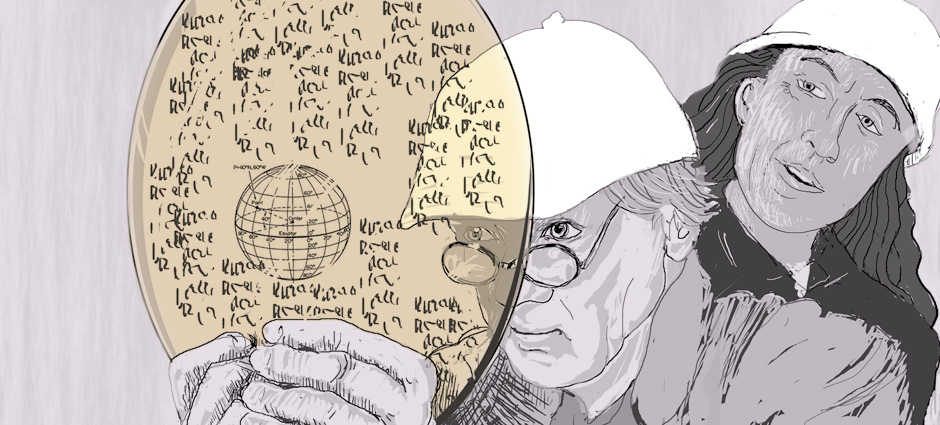Preservation of information
Preserving information for the future
How can we inform future generations that there is a repository for spent nuclear fuel deep underground?
When the Spent Fuel Repository is sealed, sometime towards the end of this century, it must be safe enough to be left unattended. The purpose of preserving information over the long term is to enable future generations to make informed decisions – for example, if they wish to retrieve the spent nuclear fuel. It is also about preventing harm in the event of accidental intrusion.
Information preservation includes documents, data, and knowledge about the repository, ranging from daily archiving to long-term transmission across generations. Key questions include what information should be preserved, where and how it should be stored, by whom, for whom, and over what timeframes. This is a complex issue that SKB, together with sister organisations in other countries, is actively exploring and collaborating on.
There are two fundamental principles for passing on information to future generations: gradual transmission and direct transmission to a distant future. Gradual transmission involves human interaction and can take place through archives, for example. Markers placed directly at the repository site are one way to transmit information directly to the future.
SKB has long worked on the issue of preserving knowledge and information about a repository for spent nuclear fuel. As early as the 1990’s, work was carried out within the Nordic Nuclear Safety Research program, under the theme “Nuclear Waste and Decommissioning.” The aim was, among other things, to map the state of knowledge and propose guidelines for archiving and selecting media for documentation preservation.
Since then, SKB has participated in international projects, including those under the OECD Nuclear Energy Agency, NEA. Between 2011 and 2018, the project Records, Knowledge and Memory, RK&M was conducted. The final report was published in 2019 and proposes a preservation strategy involving multiple mechanisms and methods operating on different timescales, using various media and content. The strategy employs different transmission methods, involves various stakeholders, and is distributed across multiple locations. In 2019, NEA launched a continuation of RK&M called the Working Party on Information, Data and Knowledge Management, WP-IDKM, in which SKB participates.
Set of Essential Records and Key Information File
A diversified preservation strategy is considered to offer good conditions for maintaining information and knowledge across generations. The RK&M final report highlights two concepts to improve accessibility to the extensive documentation – tens of thousands of documents – generated around a repository.
The first is to filter these documents according to defined principles and create a Set of Essential Records, SER, consisting of the most important technical documents about the repository. The SER is intended for future decision-makers and experts in the field.
The second is to develop a Key Information File, KIF – a very concise top-level document that describes the existence of the repository, its location, how it is constructed, and why it exists. The KIF serves as an introduction to the repository for the general public.
Research and Development
Between 2021 and 2025, a research project was conducted at Linköping University, partly funded by SKB, focusing on method development and drafting a KIF for the Spent Fuel Repository in Forsmark.
In autumn 2022, SKB carried out a preliminary study to evaluate the proposed methodology for creating a SER based on SKB’s needs, with a focus on the geological model. The study showed that the methodology can be applied at an overview level but needs to be adapted and detailed for different subject areas.
In autumn 2025, a new assignment was launched to apply the SER methodology to the repository for short-lived radioactive waste ,SFR. This assignment is part of the development of a long-term strategy for information preservation and is included in SKB’s broader initiative to safeguard knowledge and information. Results and plans are continuously reported within the framework of SKB’s research, development, and demonstration program – the Fud program.
Last review: August 11, 2025
Last review: August 11, 2025
